Drip.Drop
Chitosan as the future of water filtration systems
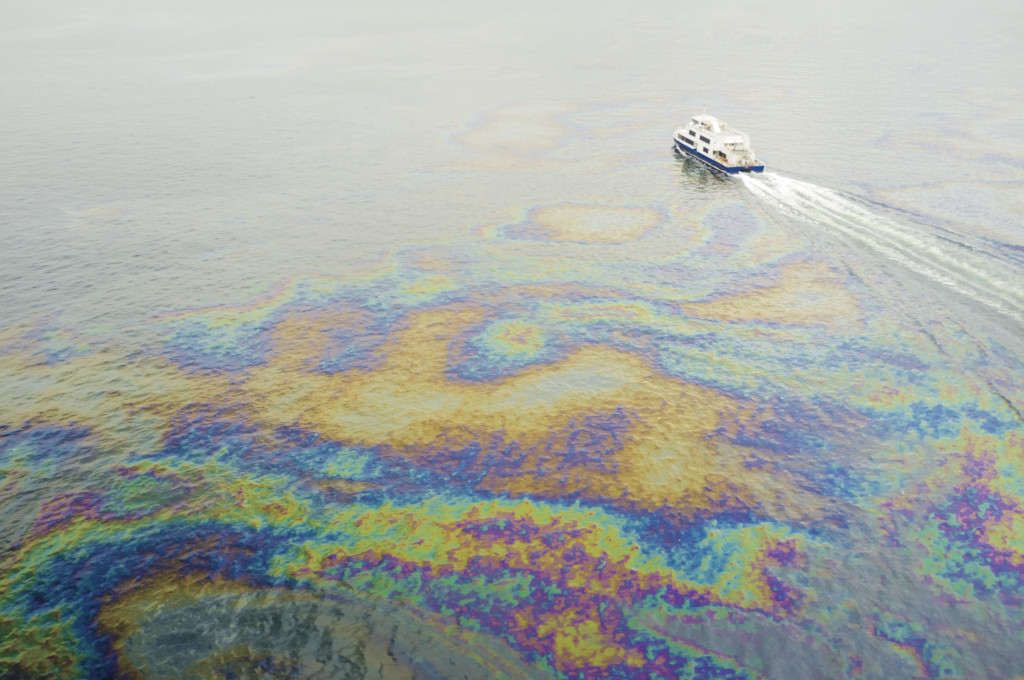
The widespread problem of water pollution is jeopardizing our health. Unsafe water kills more people each year than war and all other forms of violence combined. Meanwhile, our drinkable water sources are finite: Less than 1 percent of the earth’s freshwater is actually accessible to us. Without action, the challenges will only increase by 2050, when global demand for freshwater is expected to be one-third greater than it is now.
Drip.Drop is positioned in the interstice here as the future for localising the water filtration systems in our community, bringing water to forefront of pollution discussions. The idea here is to involve the social aspect around water that has been existing since long but does not find an appropriate place in the current urban ecosystems. Bio materials hence become a great reagents to inform the filtration systems.
Waste Water Treatment // The usual cycle
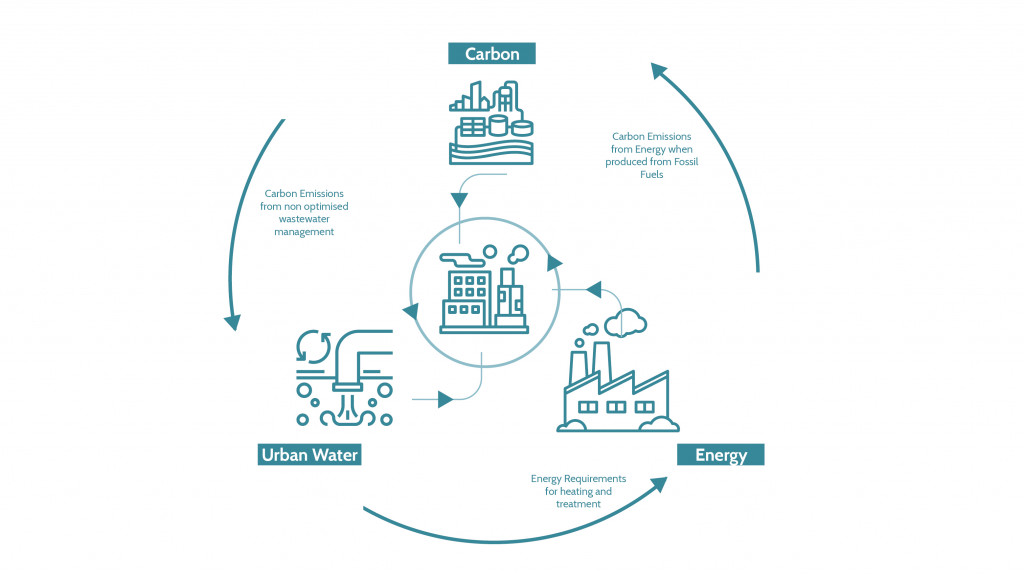
Urban Water Cycles // Sanky Diagram (Existing)
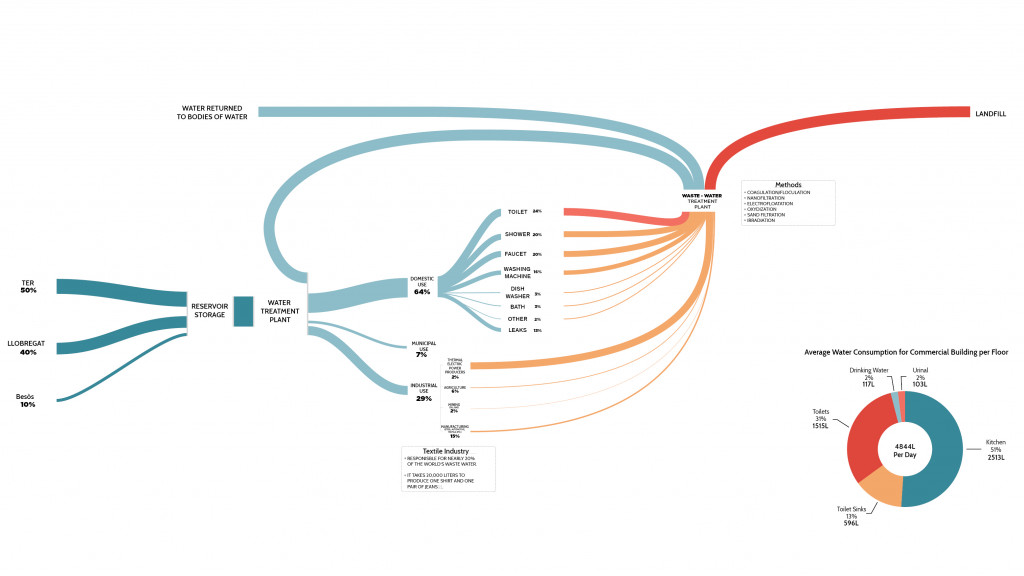
Constituents of Waste Water // Grey Water
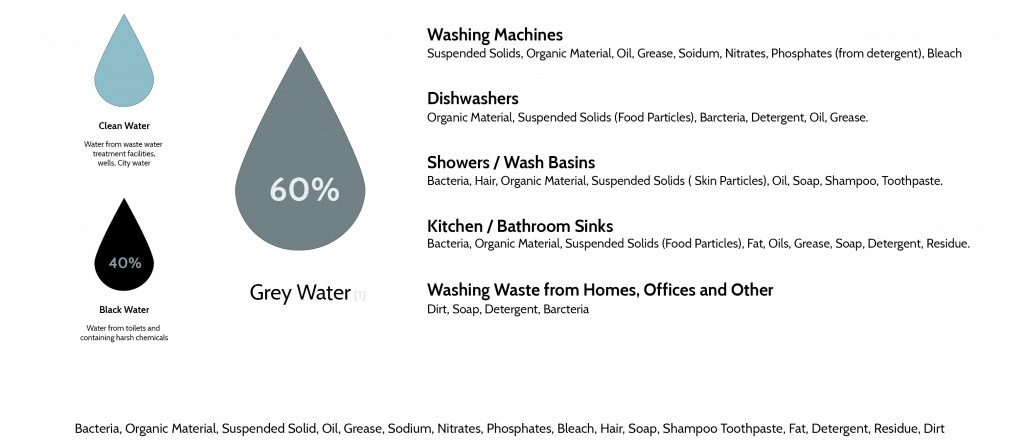
Textile Water Cycle // Sanky Diagram (Existing)
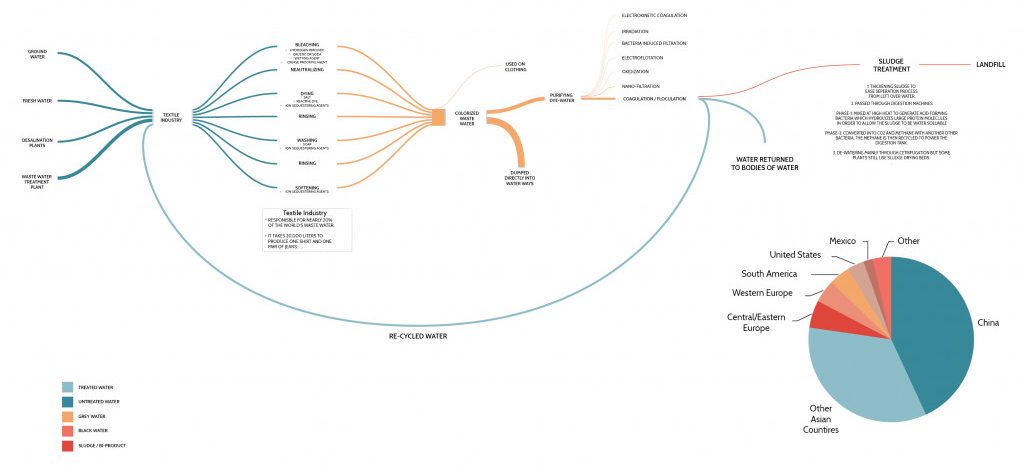
Chitosan // Bio material of the future

Availability:
Every year, some 6 million to 8 million tonnes of waste crab, shrimp and lobster shells are produced globally, about 1.5 million tonnes in southeast Asia alone. It is found in exoskeletons of crustaceans, the cuticles of insects, and the cells walls of fungi.
Fabrication:
Produced from Alkaline deacetylation (40–50% NaOH) of chitin where this N-deacetylation is almost never complete. The chitosan is considered as a partially N-deacetylated derivative of chitin.
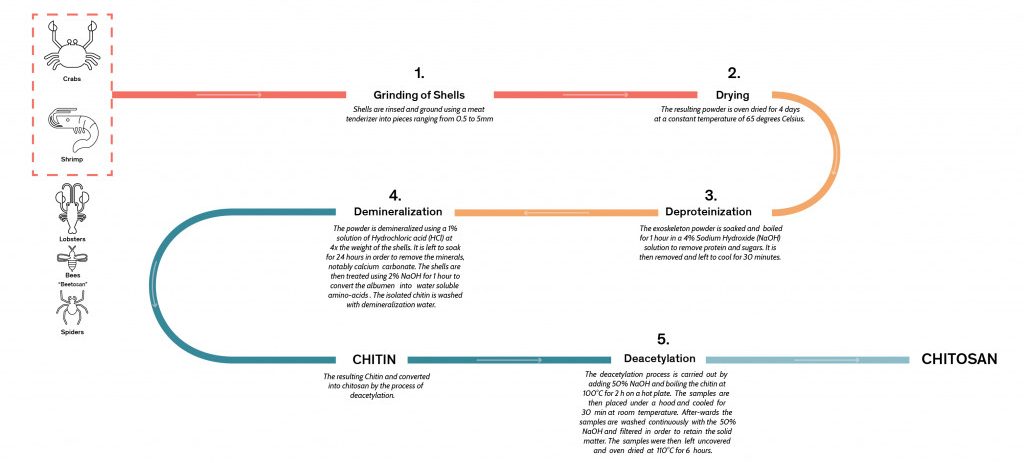
Cost:
Dried Crustacean Shells, a byproduct of seafood industry are available at 100-200$ a tonne.
Key Advantages:
- Biodegradable
- Bio-compatible
- Film-formability
- Bioadhesivity
- Hydrophilicity
- Adsorption properties
- Low cost of raw material
Chitosan // Flocculation and Coagulation
Experiment 1: Dye Coagulation
Run time: 30 minutes
0.1% Chitosan Solution
Prepared by mixing 1g Chitosan in 50ml 1% Acetic Acid Solution and 950ml Distilled water
Beaker
500ml Popular Soft Drink
ph = 3
(contains Tartarazine Dye)
0.5ml/1.0ml/1.5ml/2.5ml
Chitosan Solution
Stirring for 2 minutes
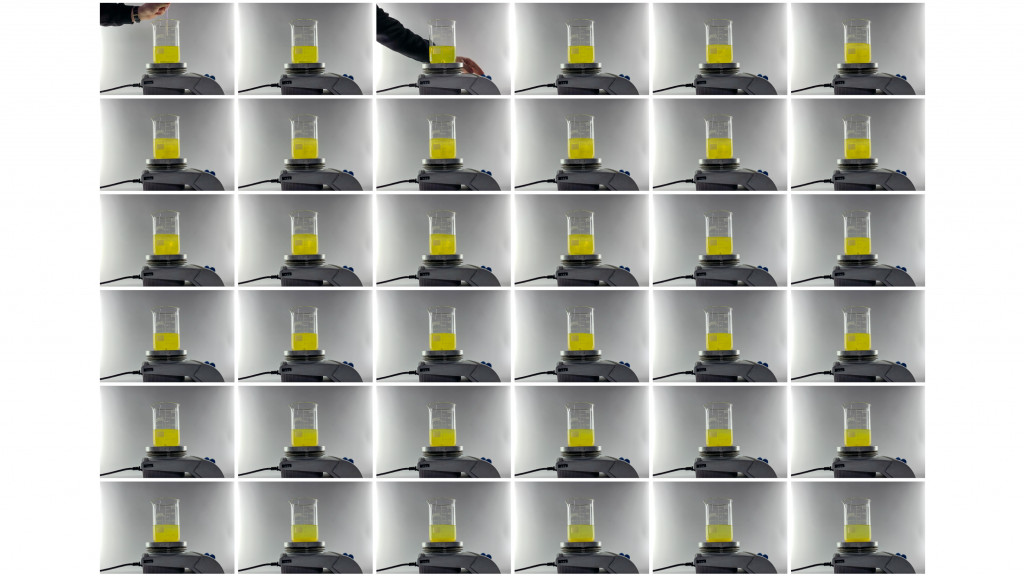
Observations:
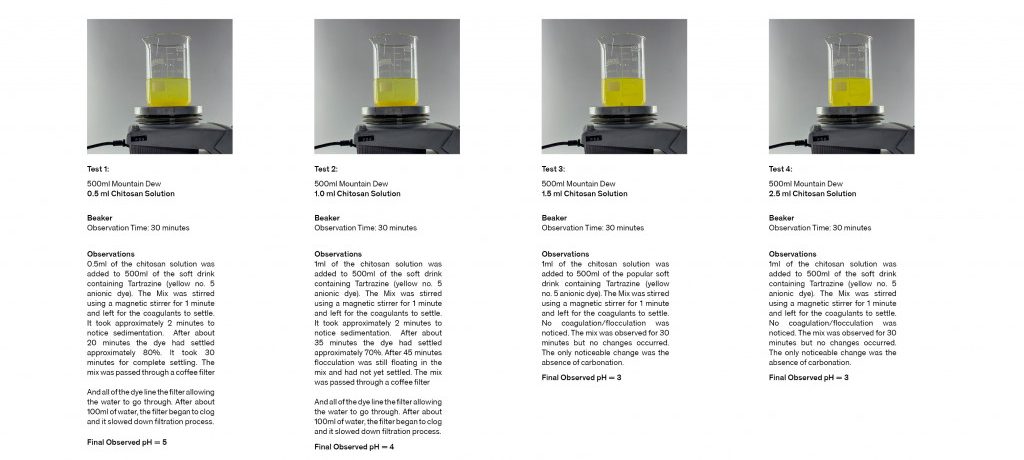
Experiment 2: Sand Flocculation
Run time: 2 minutes
0.1% Chitosan Solution
Prepared by mixing 1g Chitosan in 50ml 1% Acetic Acid Solution and 950ml Distilled water
Beaker A
200ml water
25g Sand
Beaker B
200ml water
25g Sand
10ml 0.1% Chitosan Solution
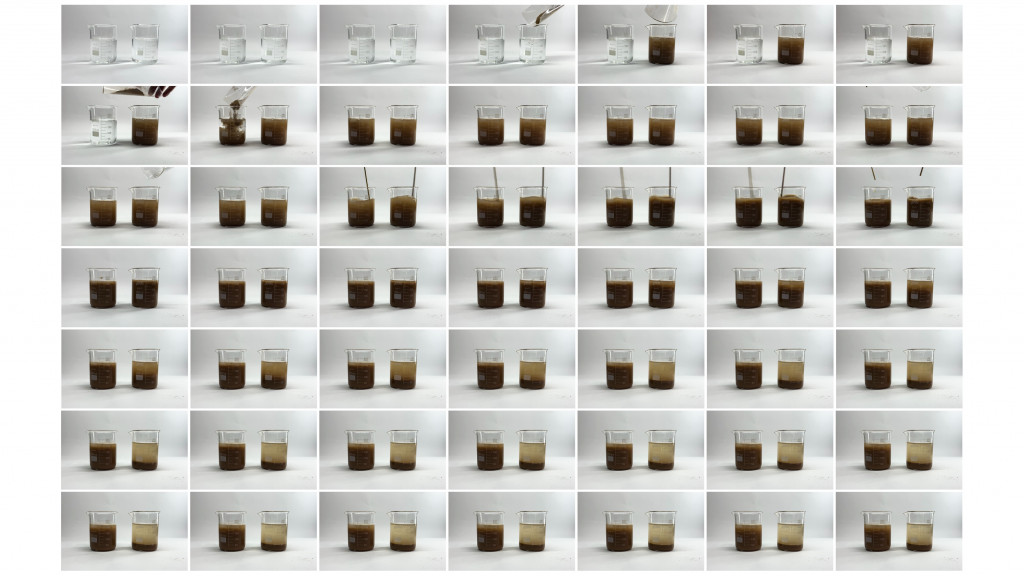
Observations:

Experiment 3: Chitosan Sand Composite
Run time: 30 minutes
20mm Chitosan Powder, 90% Deacytelated
50cms Long Acrylic Tube
250mm Sand
Polyethylene mesh
3D Printed Nosel
Details
200ml of model dye water was poured into the tube. It took approximately 5 minutes to be filtered. The water came out nearly transparent but retained a slight blue tint. The process was repeated to attain the maximum filtration capacity of the filter.
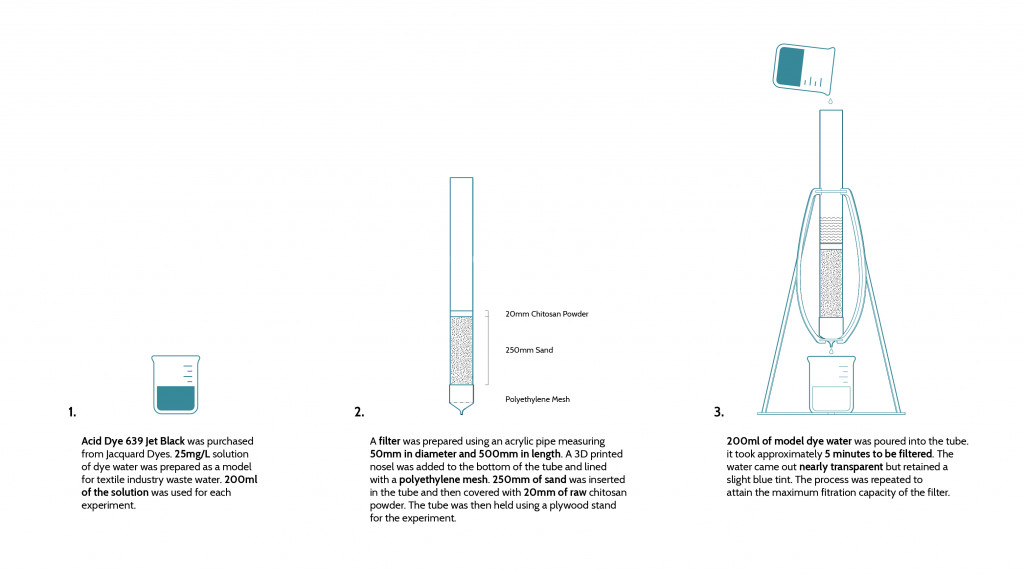
Observations:
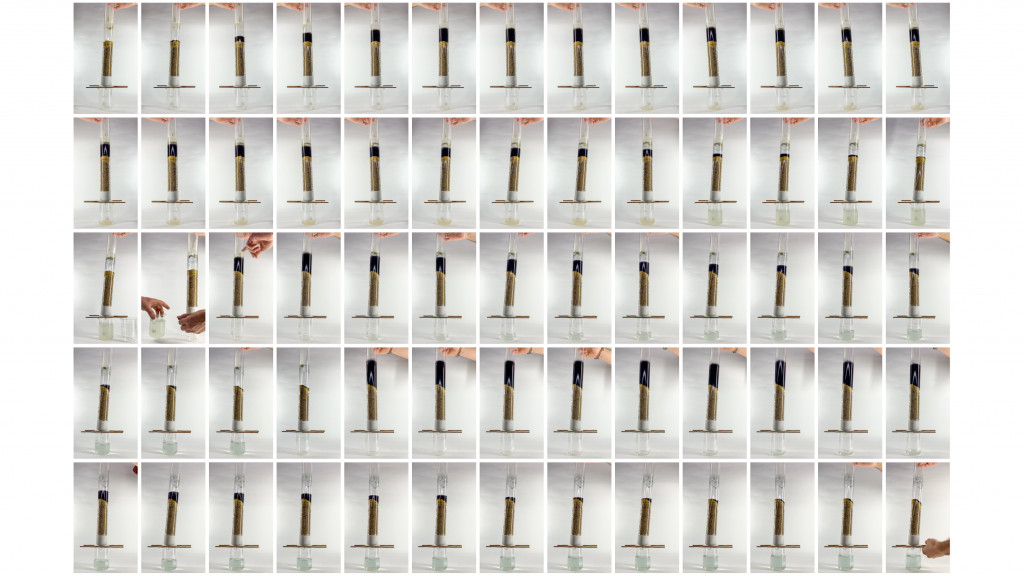
Experiment 4: Dye Water Filtration – Coffee Filter
Setup
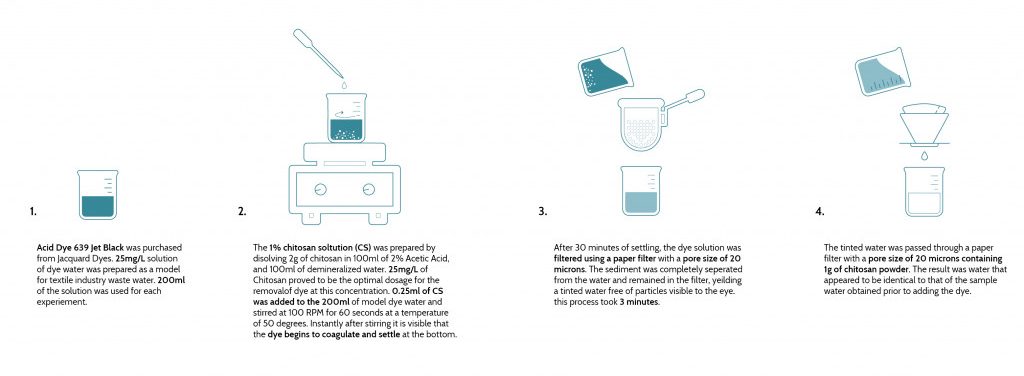
Observations
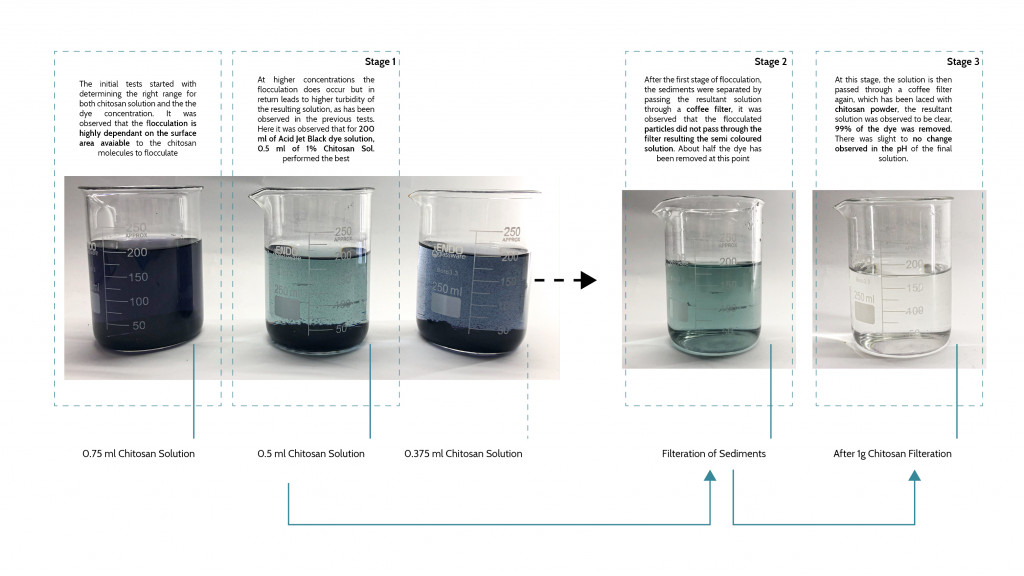
Chitosan Membrane and Microscopic Observations
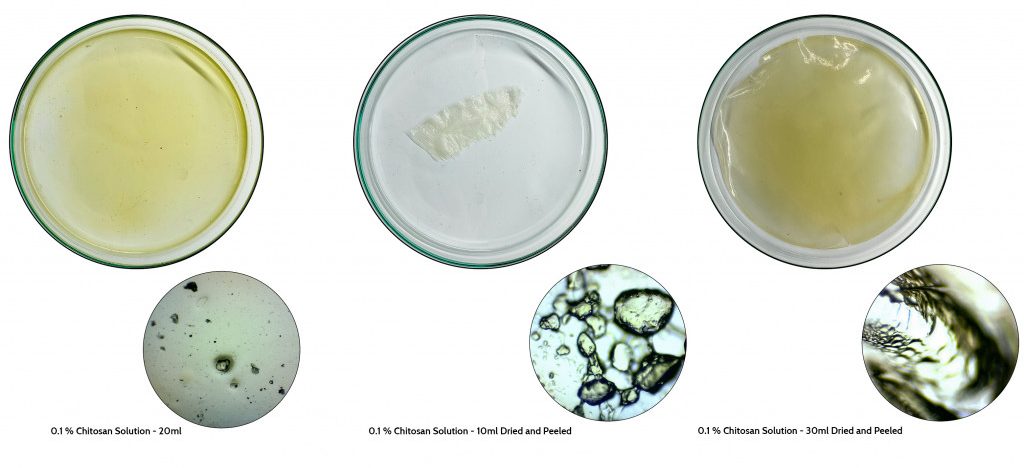
Design Proposal // Centralized to Decentralized Water Filtration Systems
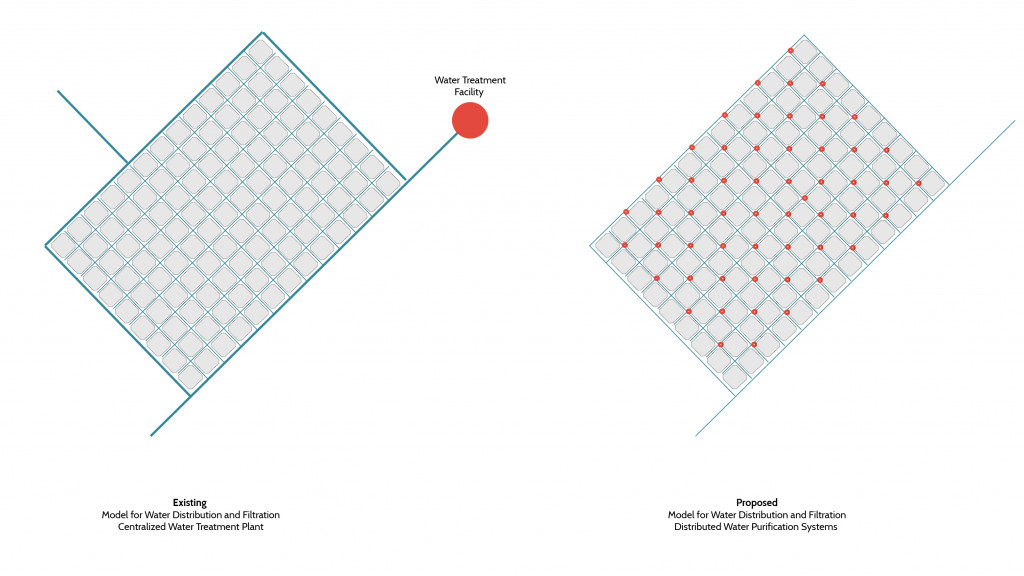
Urban Water Cycle // Volumes
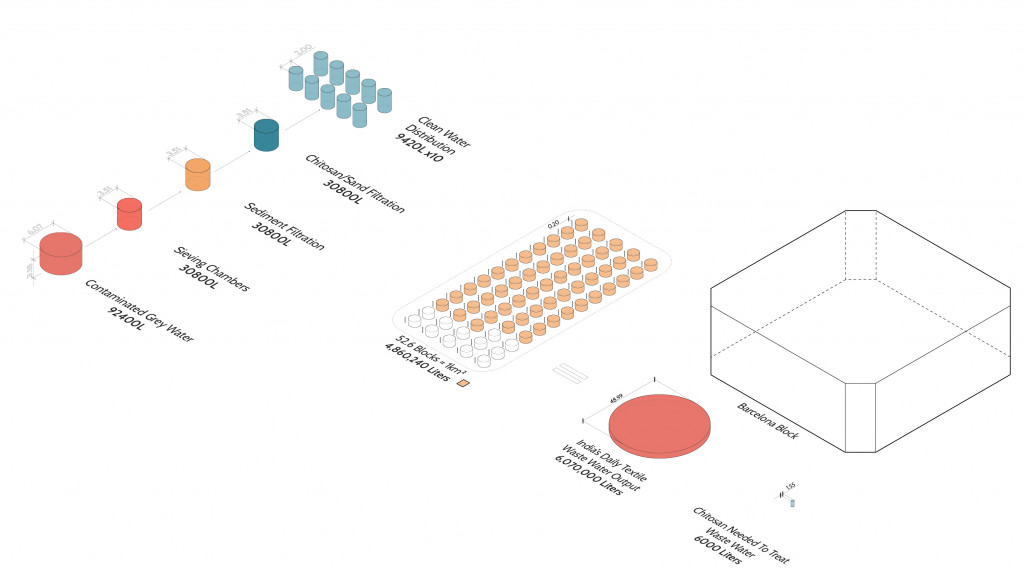
Water Filtration Requirements:
- The average person in Spain uses 132 L of water per day, similarly, in India, the average water consumption per person is 135 L.
- Average Barcelona Block is inhabited by 700-750 people.
- Every block requires an average of 92,400 L of water per day.
- Of those 92,400 L, 55,440 L is grey water.
- Chitosan is optimal as a coagulant at approximately 30-50mg / L.
- Average Barcelona block would require 2.21 Kg of Chitosan per day.
Urban Water Cycle // De-centralization Proposal
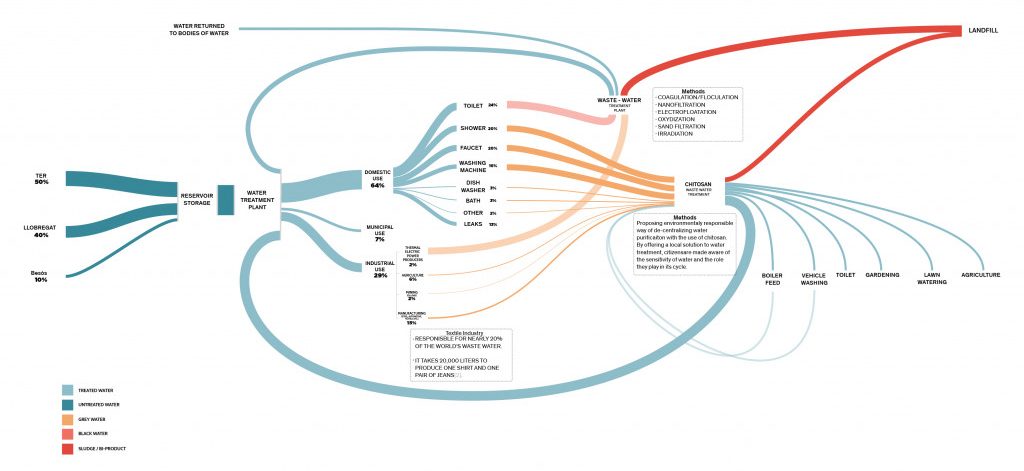
References // Precedents through History
- Water Collection and Distribution Tanks
- Social Aspects related to water : congregation and celebration

Understanding the Biological Processes // Filtration in human body
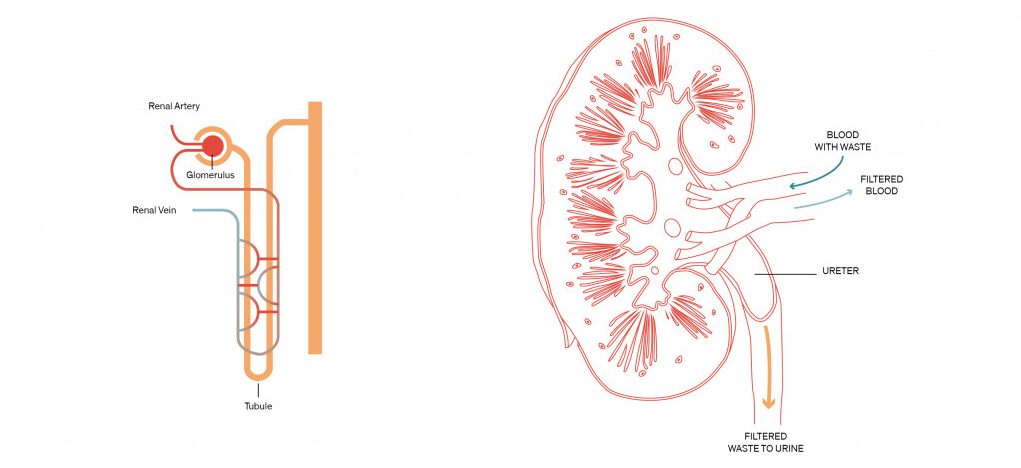
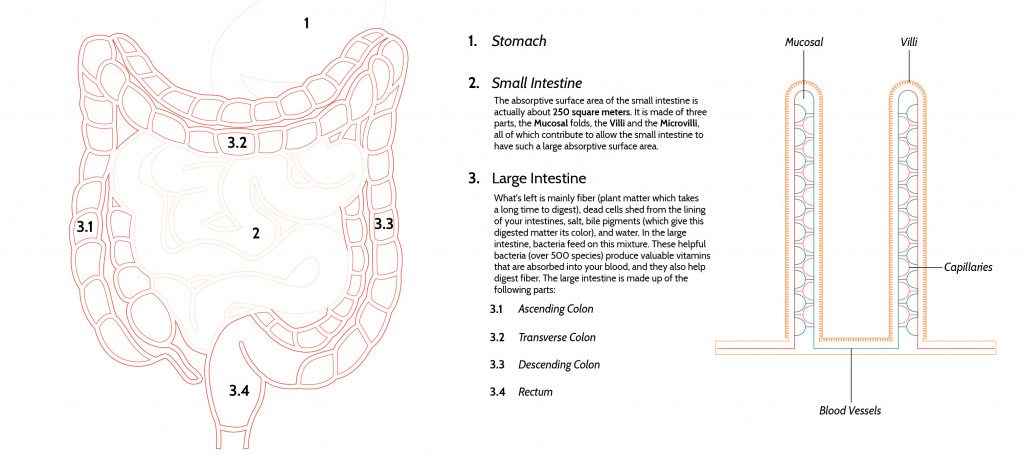
Filtration in Marine Animals // Filter Feeding Plankton’s
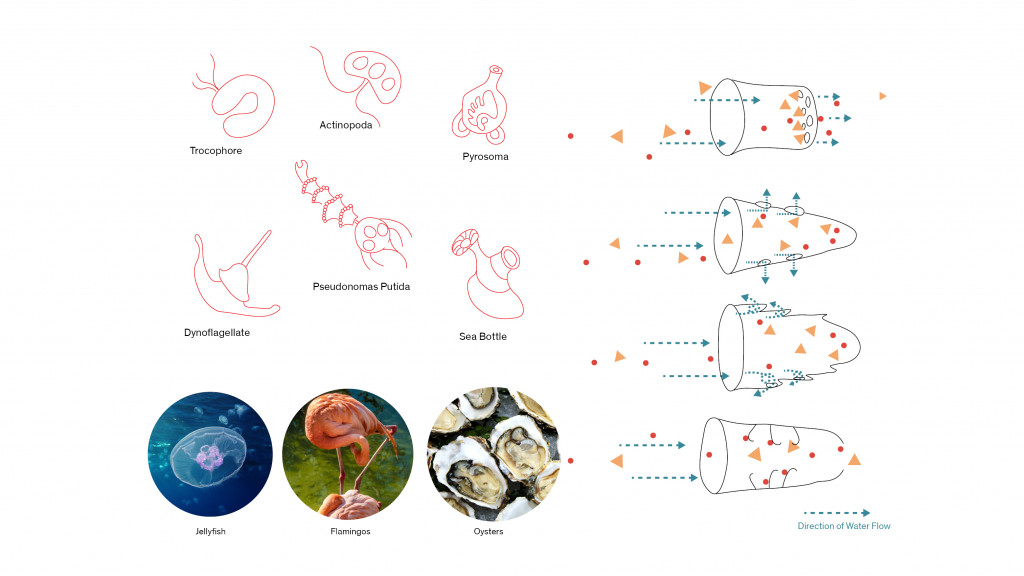
Sieving:
Water that flows into the filter passes straight through the holes in the end of the filter, similar to pasta strainer. Only suspended food particles that are too large to fit through the holes are captured.
Cross-Flow Filtration:
Water is re-directed sharply out of the holes on the side of the filter, while both large and small particles are shunted towards the collection area.
Vortex Filtration:
Ridges or plates located near holes on the side of the filter cause the water to form small vortices as it exits. Like tiny tornadoes, these vortices whip particles into the center of the filter.
Interception:
Food particles get stuck on sticky surfaces that they touch within the filter.
Design Intent // Conceptual Drawings
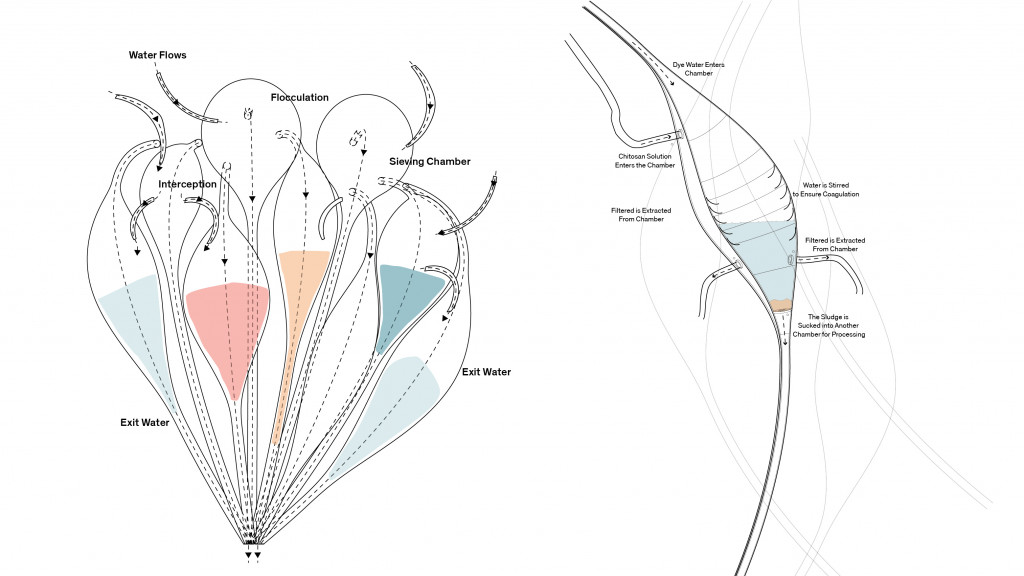
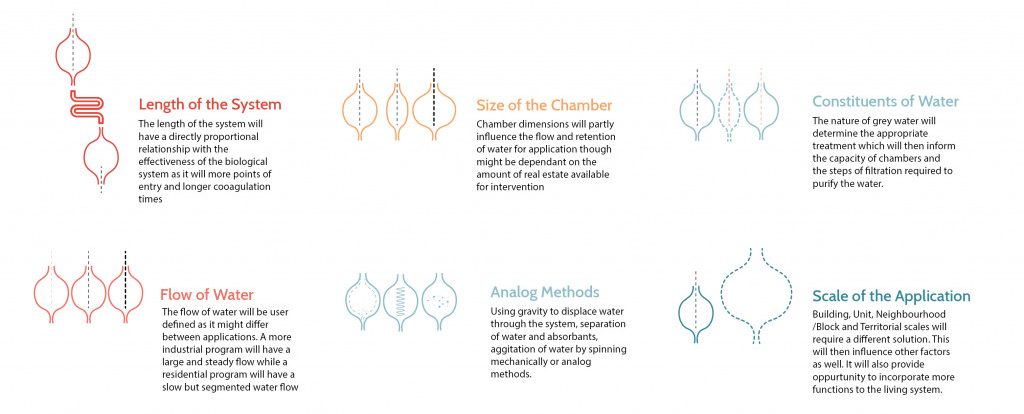
Design Intent: Water Flow and Segmentation
Household Water Flow Diagram
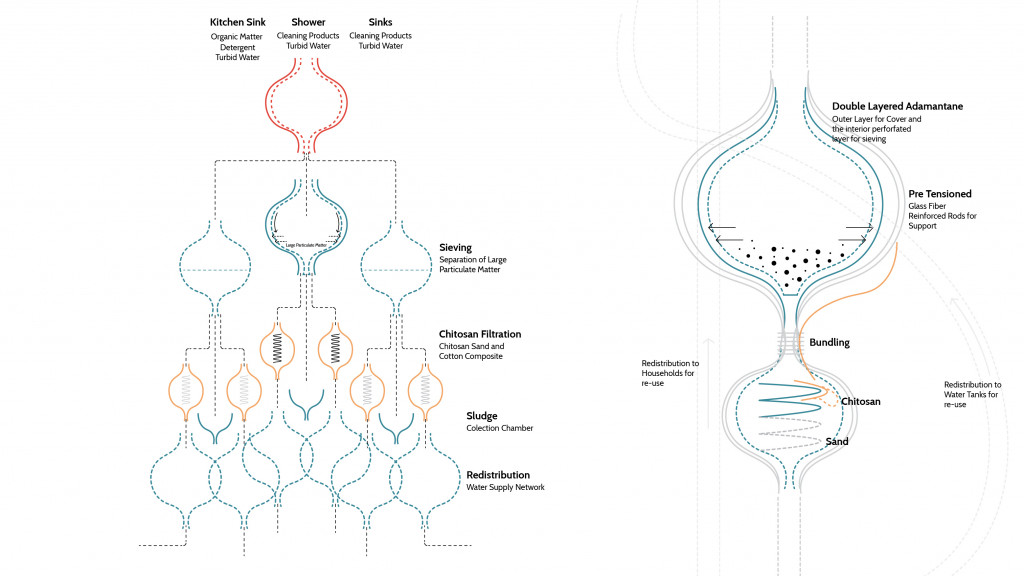
Industrial Water Flow Diagram
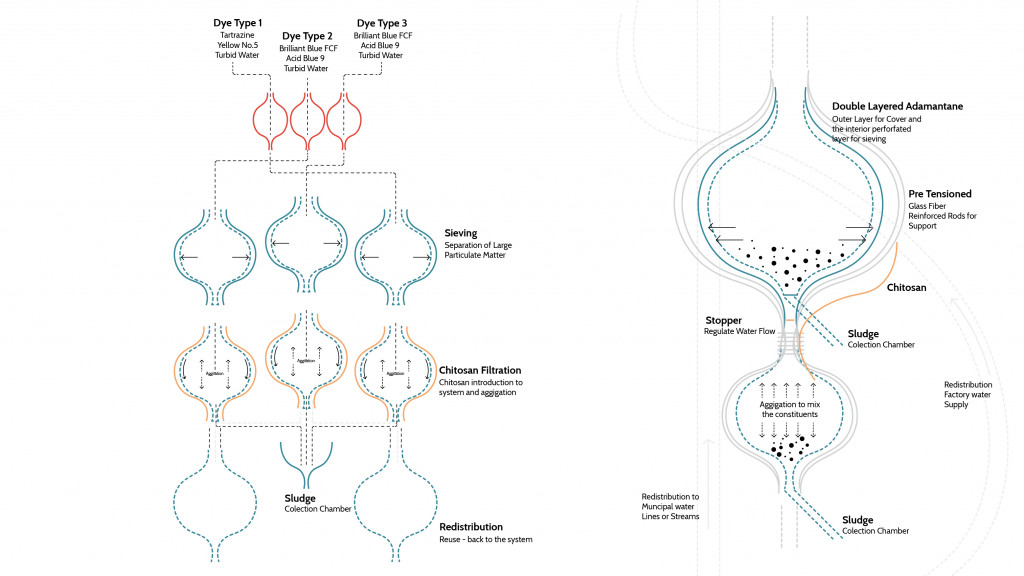
Material Research
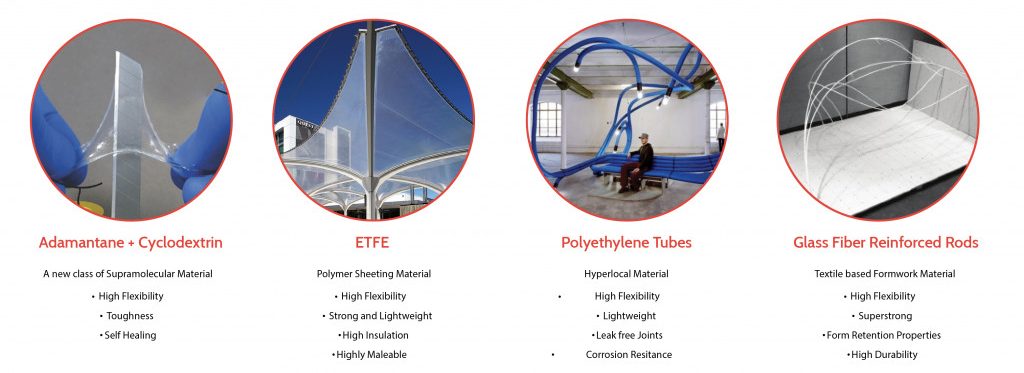
Code Development
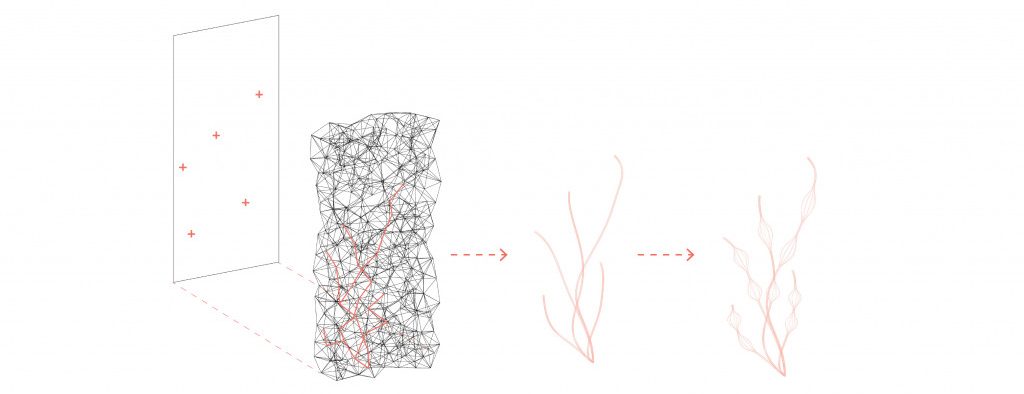

1. Choose points as surface and use curve network to find shortest path to the ground.
2. Use curves to generate pipes and extract curves to use as bending rods.
3. Use Kangaroo solver to generate active bending in rods for chambers.
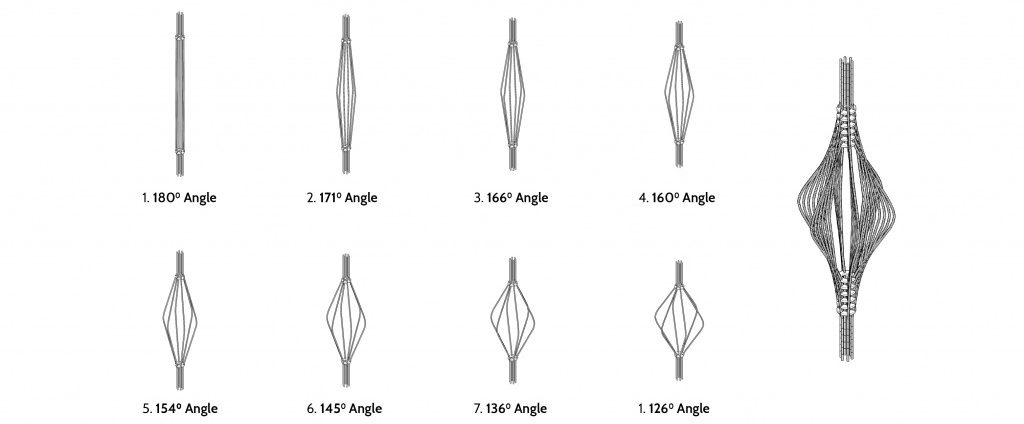
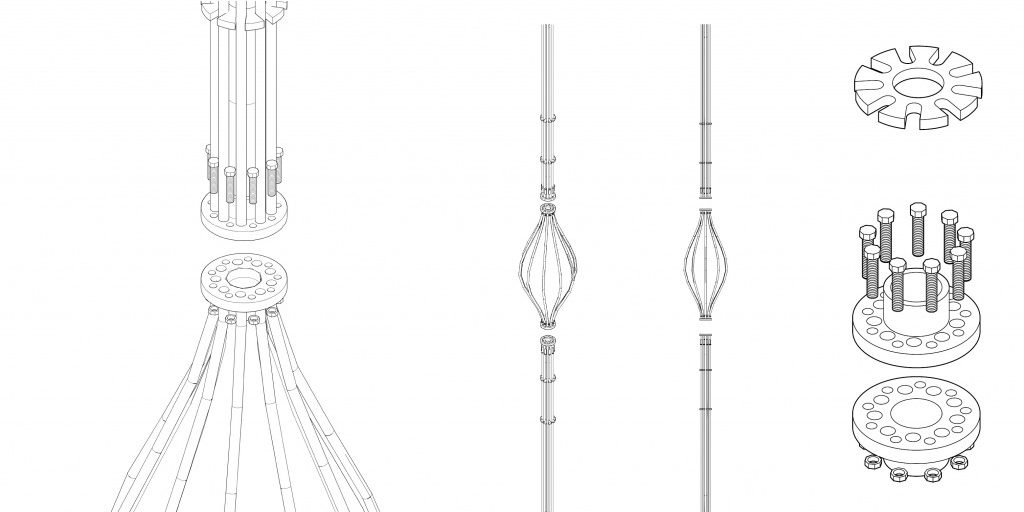
Chamber Volumetric Study
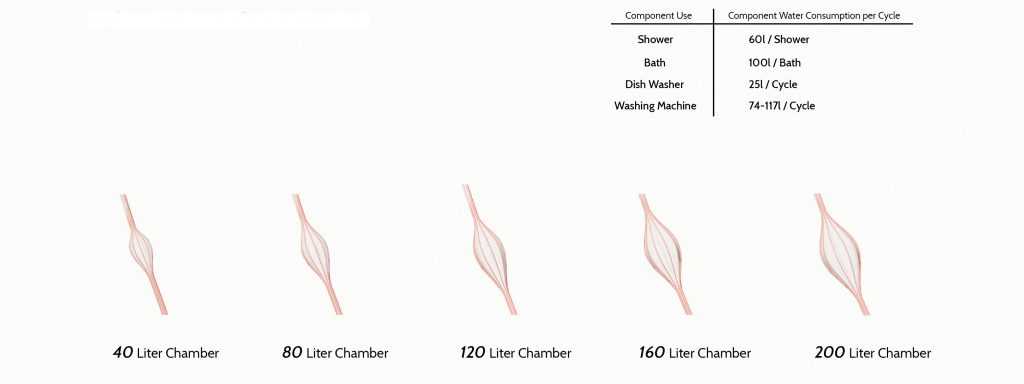
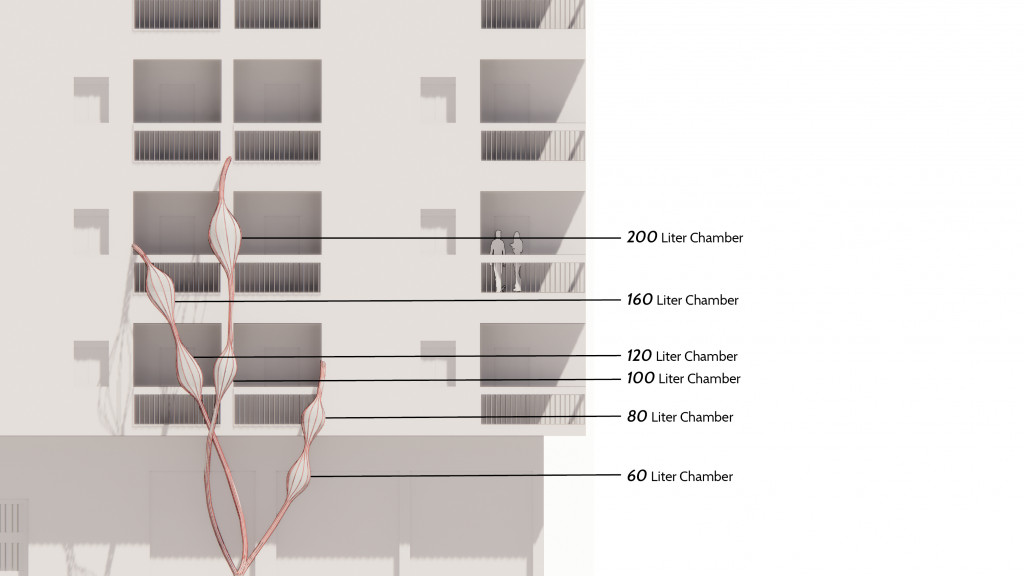
Section: Steps of Filtration

Surface Geometry: Filtration Enhancement
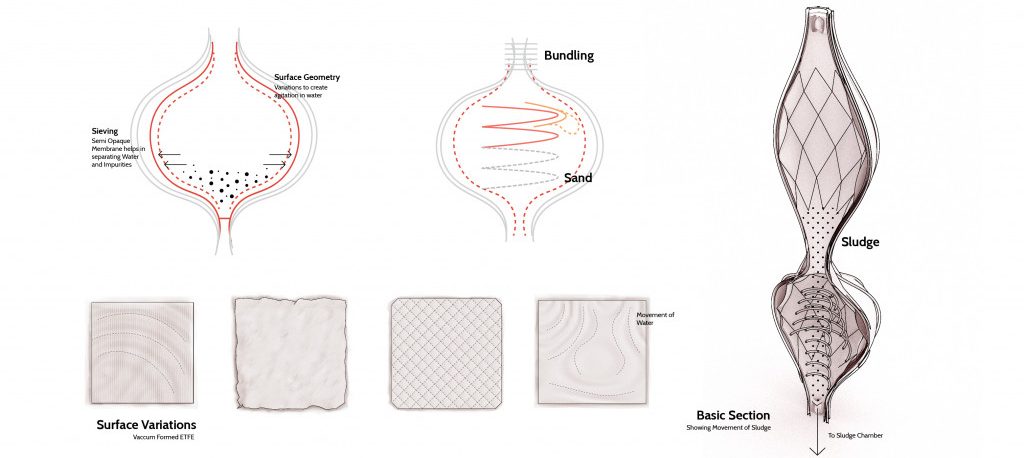
Cataloguing
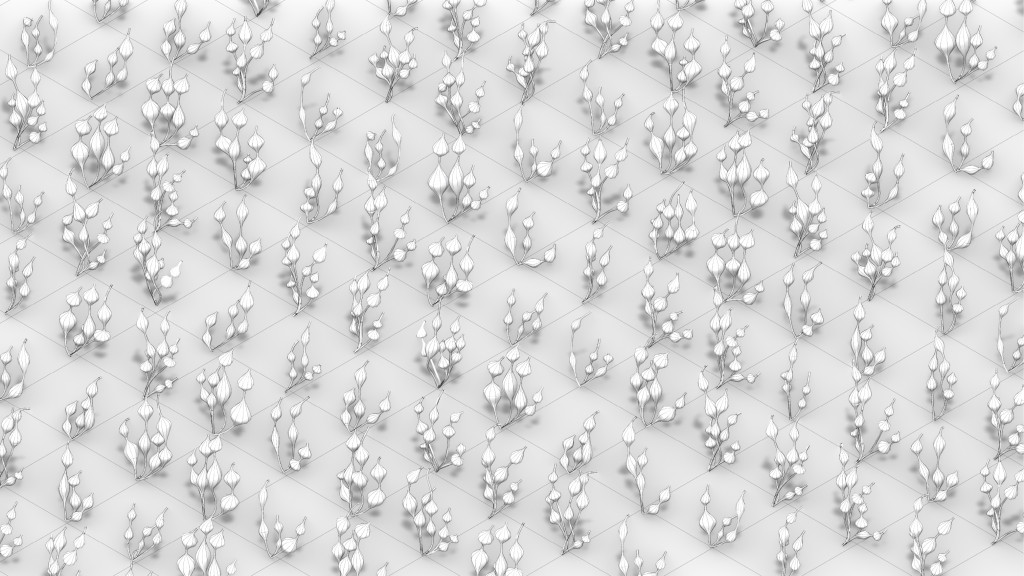
Visualization

Household and Urban Scale: Combined Load Sharing
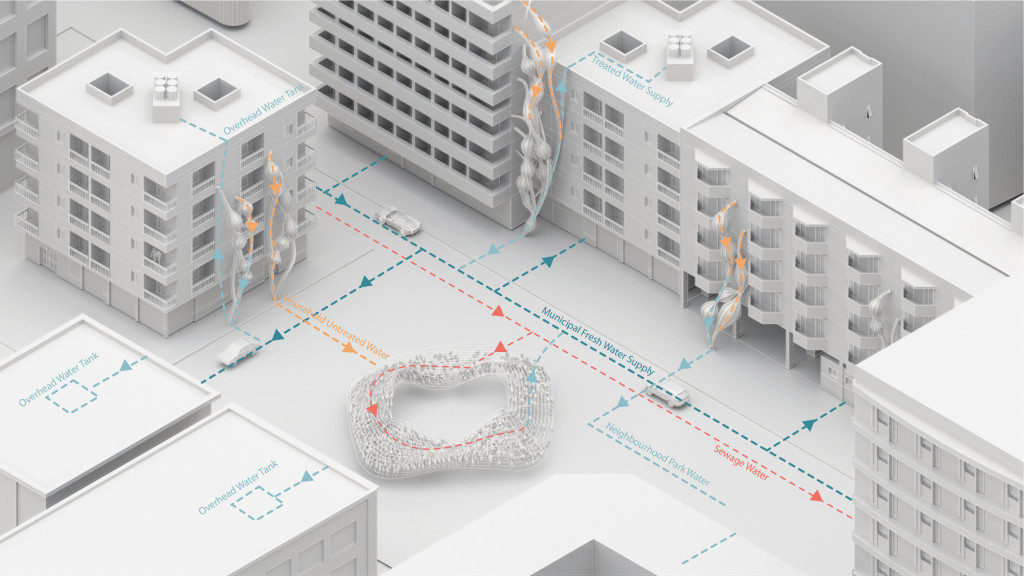
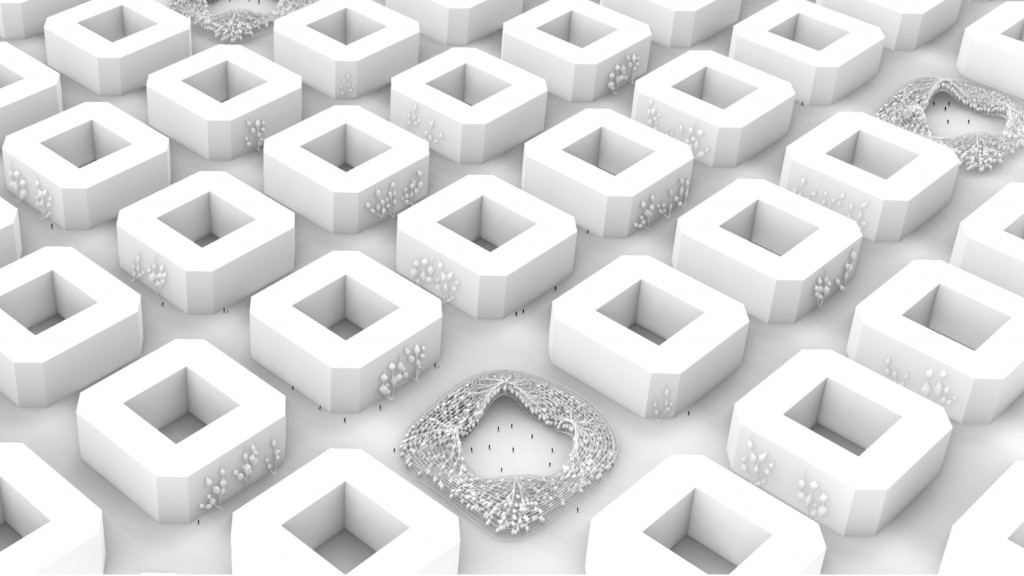
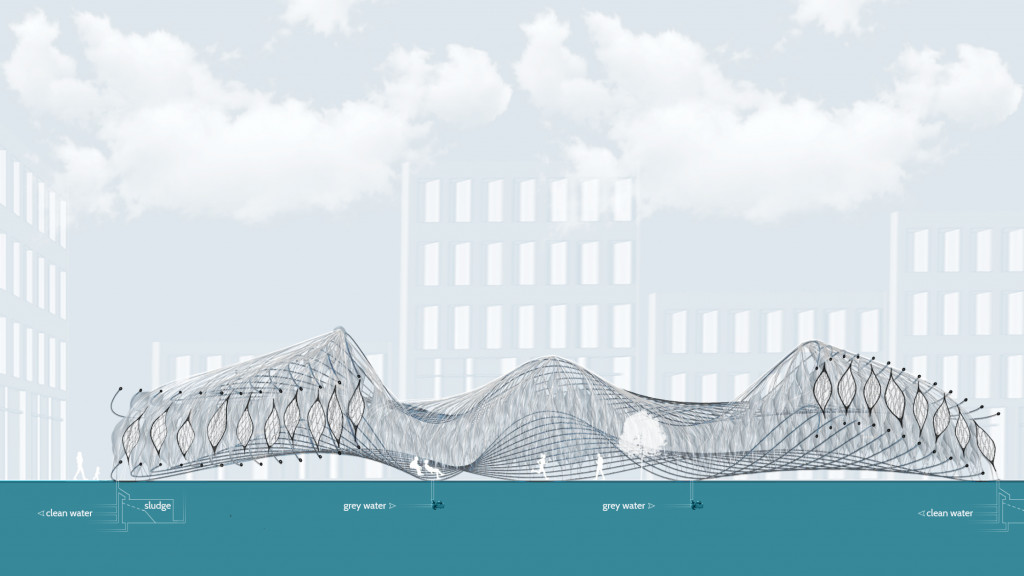
1:1 Scale Prototype Study
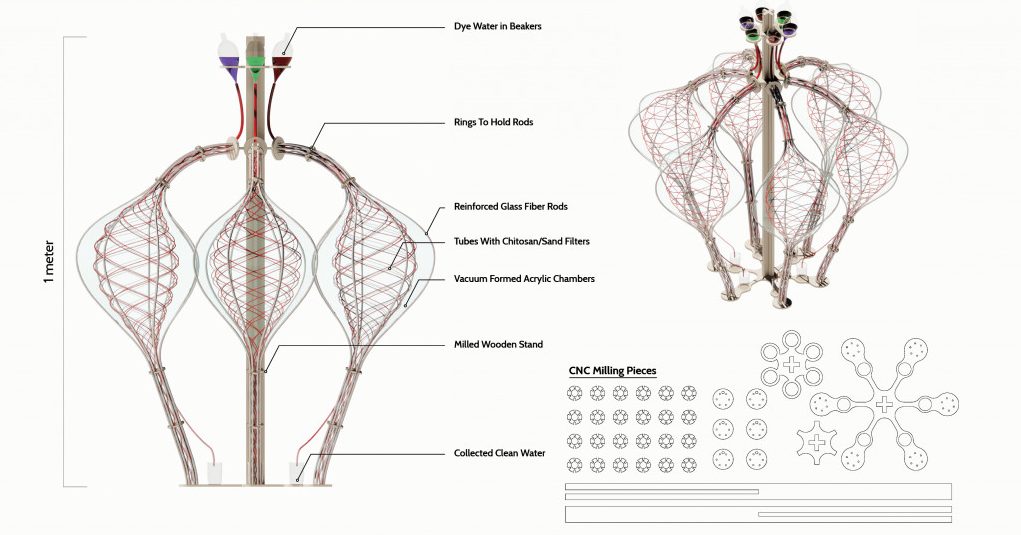
Drip.Drop is a project of IAAC, Institute for Advanced Architecture of Catalonia developed in the Master in Advanced Architecture 2019/20 by
Students: Abhishek Sharma, Ibrahim Kukner, Zackary Bryson
Faculty: Areti Markopoulou, Raimund Krenmueller, David Andres Leon, Nikol Kirova
